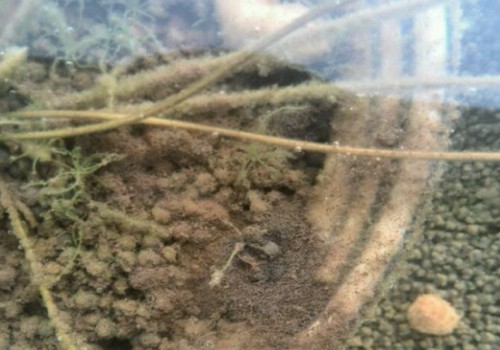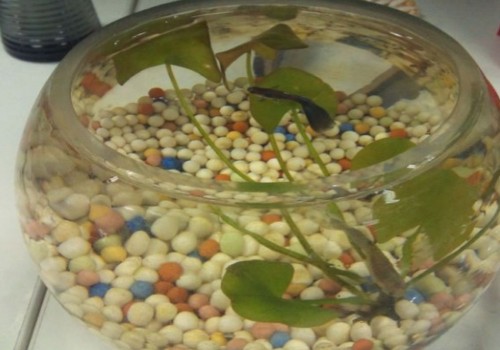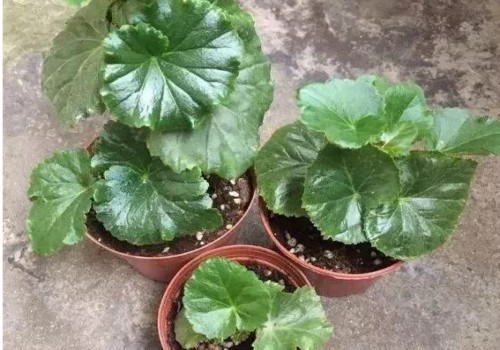What about the worms growing in the lotus soil?
Many people like to raise water lilies, which are not only for appreciation, but also full of interest. However, the conservation environment we provide should be good enough. If there is insufficient light and poor ventilation, it is easier for worms to grow in the basin. If the worms grow in the water, especially the larvae of mosquitoes, then we can raise some fish in the basin and clean them up. But what if worms grow in the mud?

Whether they are in the water or in the soil, they do not look beautiful and sometimes disgusting to potted water lilies, and they may also spread harmful bacteria, not only affecting the normal growth of water lilies, but also may even bring health problems to the environment. Therefore, once the phenomenon of growing insects in the water lily basin is found, it must be disposed of in time.
For water lilies, it is generally easier to deal with worms, which can be cleaned up with a few fish. And even if the worms grow on their stems and leaves, we can usually spray them with drugs diluted with water in a scientific proportion, which can often have a good effect. But what about the worms in the soil of water lilies?
The potted mud of water lilies is relatively rich and soft, and it is also a hotbed for worms. If the original is not dealt with in time, the insects may eat the roots of water lilies and spread harmful bacteria at the same time, thus infecting the roots of the plant and then showing rotten roots. Further affect its normal growth. But if you want to use medicine to kill insects in the basin mud, it is often troublesome.
In order to clean up the worms in the soil at the bottom of the basin, we can kill them without drugs, but by changing the basin and soil. First of all, dig out the roots of water lilies from the basin mud, then rinse thoroughly, and then trim the roots properly to get rid of the rotten parts. Then soak with carbendazim and other drugs to sterilize and disinfect, wait for the wound to coagulate and then re-plant it in the basin.
However, it is recommended to use new basin and new basin mud when putting on the basin. If necessary, we can also mix some insecticidal drugs into the basin mud, which can better prevent insect pests. If we use the new basin and the new basin mud to replant, there will be no insect pests in the basin mud. After replanting, we also need to provide a good growing environment for water lilies in time, usually requiring smooth ventilation and adequate light, so as to avoid the recurrence of insect pests.
Time: 2019-05-27 Click:
- Prev

What about the worms in the water of water lilies
Water lotus leaves are oily green and blossom, which is not only suitable for viewing leaves, but also suitable for viewing flowers. If raised in pots, the ornamental value is very high. But first of all, we need to provide a high-quality growth environment, so as to ensure that the plant grows vigorously and blossoms beautifully. But if the environment is destroyed,
- Next

Treatment of rotten Root of Rieger Begonia
Rieger Begonia is a popular flower plant, which not only blossoms beautifully, but also has large green leaves. It is of high ornamental value as a potted plant. Moreover, the flowering period of Rieger Begonia is also very long, as long as the pot culture environment is suitable and the management is done well, it can even blossom all the year round.
Related
- Fuxing push coffee new agricultural production and marketing class: lack of small-scale processing plants
- Jujube rice field leisure farm deep ploughing Yilan for five years to create a space for organic food and play
- Nongyu Farm-A trial of organic papaya for brave women with advanced technology
- Four points for attention in the prevention and control of diseases and insect pests of edible fungi
- How to add nutrient solution to Edible Fungi
- Is there any good way to control edible fungus mites?
- Open Inoculation Technology of Edible Fungi
- Is there any clever way to use fertilizer for edible fungus in winter?
- What agents are used to kill the pathogens of edible fungi in the mushroom shed?
- Rapid drying of Edible Fungi

